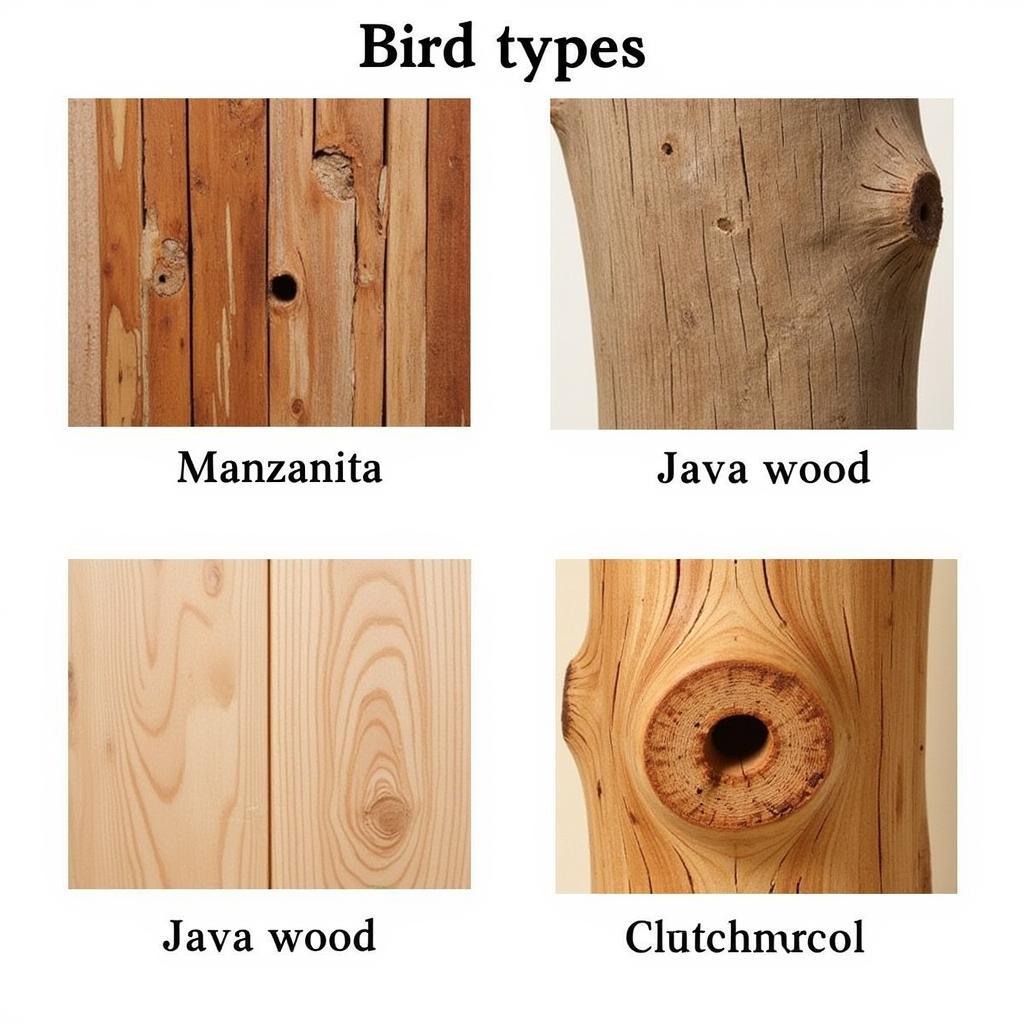Choosing the Perfect Wood Perch for Your Feathered Friend
October 31, 2024Wood Perches are an essential element in any bird’s cage, providing comfort, exercise, and promoting healthy foot and leg muscles. Choosing the right wood perch can significantly impact your bird’s well-being. This guide will explore everything you need to know about selecting the perfect wood perch for your feathered companion.
Choosing the right perch isn’t just about aesthetics; it’s about your bird’s health and happiness. Different types of wood, sizes, and shapes offer unique benefits, catering to different species and individual needs. Let’s delve into the world of wood perches and discover how to create a stimulating and comfortable environment for your avian friend. You might be surprised at the difference a well-chosen perch can make. For those looking to enhance their bird’s environment, consider checking out our rope bird perch.
Understanding the Importance of Wood Perches
Why are wood perches so crucial for your bird’s health? Unlike plastic or metal perches, natural wood provides the varying textures and diameters essential for maintaining foot health. This variation helps prevent pressure sores and arthritis, ensuring your bird can comfortably grip and move around its cage.
Benefits of Natural Wood
- Foot Health: The uneven surface of natural wood promotes healthy foot and leg muscle development.
- Mental Stimulation: Different shapes and sizes encourage climbing and exploration, reducing boredom.
- Natural Behavior: Wood perches allow birds to engage in natural behaviors like preening and chewing.
- Safety: Natural, untreated wood is safe for birds to gnaw on.
Selecting the Right Wood Perch
With various wood types available, how do you choose the right one? Consider your bird’s species, size, and individual preferences. Some woods are softer and easier to chew, while others are more durable.
Types of Wood for Perches
- Manzanita: A dense, hard wood that’s long-lasting and provides excellent chewing opportunities.
- Java Wood: Known for its interesting shapes and textures, Java wood is another durable option.
- Cottonwood: A softer wood suitable for smaller birds and provides good chewing exercise.
 Different Wood Types for Bird Perches
Different Wood Types for Bird Perches
Size and Shape Matter
The diameter of the perch should allow your bird to grip comfortably without its toes overlapping or completely encircling the perch. Varying perch sizes and shapes within the cage encourages exercise and helps prevent foot fatigue. If you’re unsure which perch size is best for your feathered friend, you can visit pet shop display cages and see them in action.
Maintaining Wood Perches
Keeping your bird’s perches clean is essential for its health. Regularly scrub the perches with a bird-safe disinfectant and replace them when they show signs of excessive wear or damage.
Cleaning and Replacement
- Cleaning: Scrub perches with a brush and bird-safe disinfectant weekly.
- Replacement: Replace perches when they become excessively worn or soiled.
Creating a Stimulating Environment
Providing a variety of perches in different sizes, shapes, and textures creates a stimulating and enriching environment for your bird. This encourages natural behaviors and helps prevent boredom, promoting both physical and mental well-being. You can further enhance their environment with accessories like animal head golf covers.
Conclusion
Choosing the right wood perch is a vital aspect of bird ownership. By understanding the importance of natural wood, selecting appropriate sizes and shapes, and maintaining cleanliness, you can provide your feathered friend with a comfortable, stimulating, and healthy environment. Remember, a happy bird is a healthy bird! A wood perch is more than just a place to sit; it’s an investment in your bird’s overall well-being. Check out our selection of ceramic miniature animals for adding extra flair to your bird’s environment. Consider a bird bath deck railing for outdoor enjoyment.
FAQ
- What type of wood is best for bird perches? Manzanita, Java wood, and Cottonwood are all good choices.
- How often should I clean my bird’s perches? Weekly cleaning is recommended.
- How do I know if a perch is the right size for my bird? The bird’s toes should not overlap or completely encircle the perch.
- Can I use branches from my backyard for perches? Only if you can identify the wood and ensure it’s safe for birds and free of pesticides.
- Why are natural wood perches better than plastic or metal? They provide varying textures and diameters, promoting foot health and preventing pressure sores.
- How many perches should I put in my bird’s cage? Provide a variety of perches in different sizes and shapes to encourage exercise and exploration.
- Where can I find high-quality wood perches for my bird? Reputable pet stores and online retailers specialize in avian supplies.
Common Scenarios
- Scenario 1: Your bird is constantly chewing on its perch. This is normal behavior, ensure you’re providing safe, chewable wood.
- Scenario 2: Your bird seems to be favoring one leg. This could indicate a foot problem, potentially related to perch size or type.
- Scenario 3: Your bird’s droppings are consistently staining the perch. Increase cleaning frequency or consider a perch cover.
Further Exploration
Consider researching specific perch recommendations for your bird’s species. Explore different perch accessories and toys to further enrich your bird’s environment.
Need Assistance?
For any questions or assistance with bird care and accessories, please contact us:
Phone: 0963418788
Email: [email protected]
Address: 2M4H+PMH, Phường Nghĩa Thành, Gia Nghĩa, Đắk Nông, Việt Nam.
We have a 24/7 customer service team ready to help.